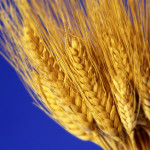 Is All Wheat Whole Wheat?
Is All Wheat Whole Wheat?
Growing up my family ate sandwiches on Home Pride Butter Top® white bread. Had we read the label (not a common practice back then), the first ingredient would have been: enriched wheat flour. Wow…enriched, that must be good! We never thought about why it had to be enriched.
White flour is bleached wheat flour which has been stripped not only of its nutrients (therefore the need to “fortify” it with vitamins), but also of its fiber-rich bran “jacket” (which acts to slow its digestion, allowing for better regulation of blood sugar levels). All that’s left when the milling processing is complete is a pulpy, pasty, refined carbohydrate which is poised to turn into sugar molecules the moment it hits your tongue!
Today you and I are savvy shoppers when it comes to buying healthier bread. We read labels; we know what we are buying, right? You may not want to be so quick to agree. Labels can be a tricky thing. Often misleading, bold lettering is plastered across the packaging. If a product touts “Wheat Bread”, realize that it is most likely not whole wheat bread. While it may be darker in color than white bread, it is still missing some vital components.
Another way companies can misrepresent their baked good is by bragging that it “Contains Whole Wheat”. This is often code for: “Mostly enriched wheat flour, some whole grain flour added”. Even when packages boldly state: “Whole Grain”, there is a very real possibility that once again, it only partially consists of whole wheat or whole grain—the rest is refined wheat flour.
The best way to ensure that you’re getting “the whole grain and nothin’ but the grain” is to either see “100% Whole Wheat/Grain” advertised on the front of the package or by thoroughly examining the fine print (the ingredients). So take the time to be a super-sleuth when it comes to your bread buying. Your efforts will pay handsome rewards.